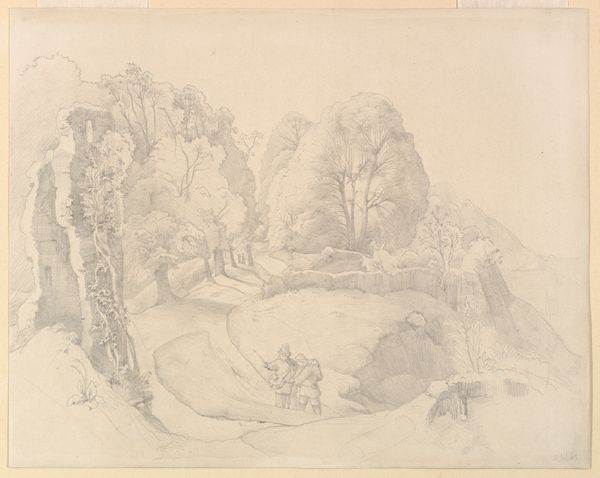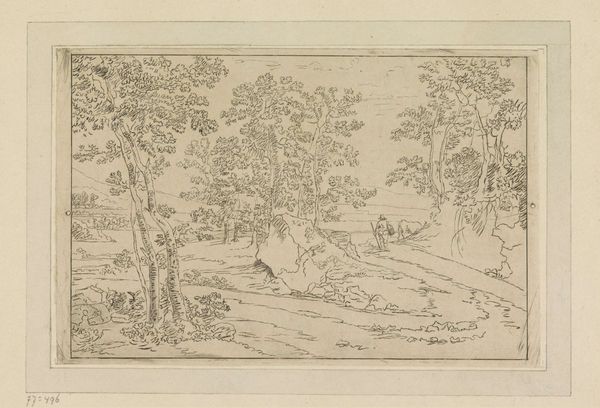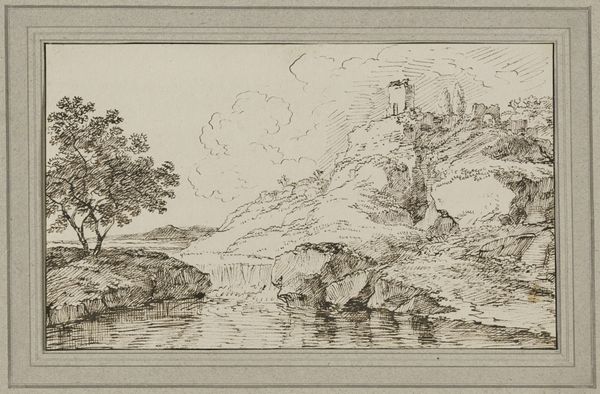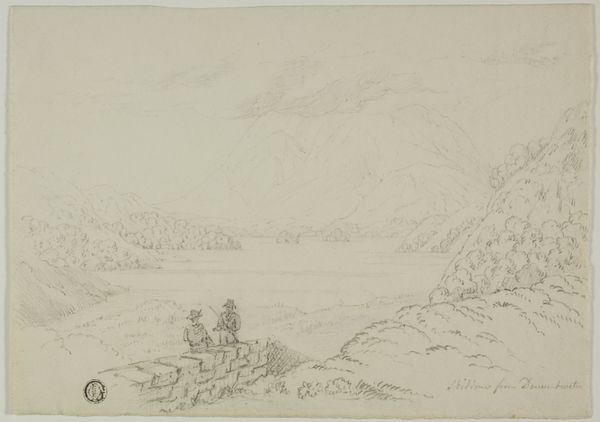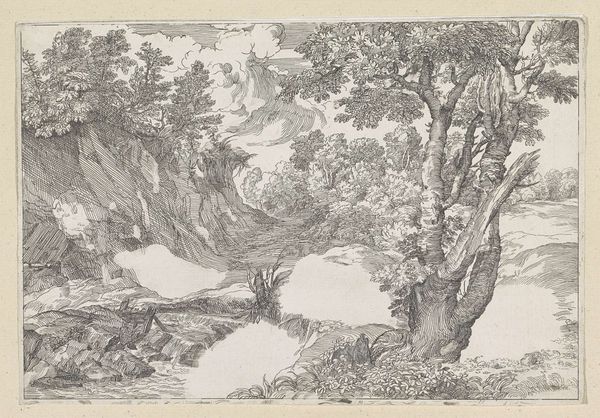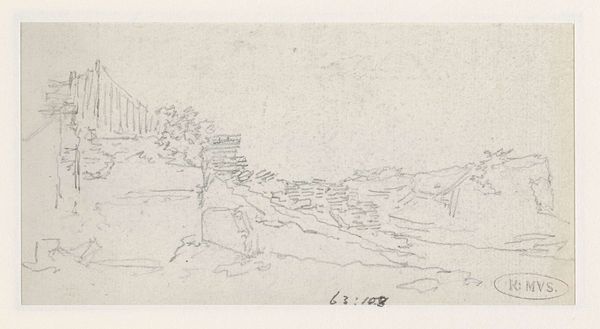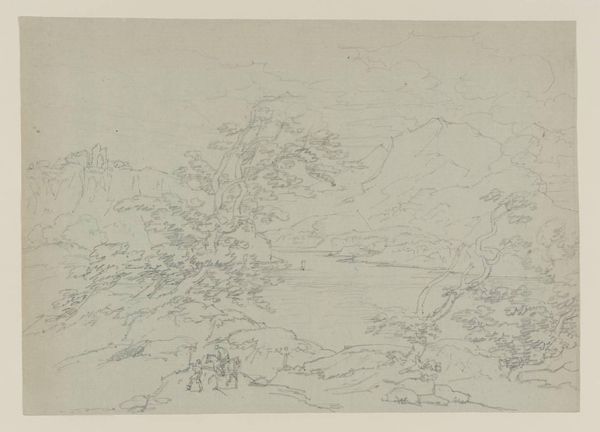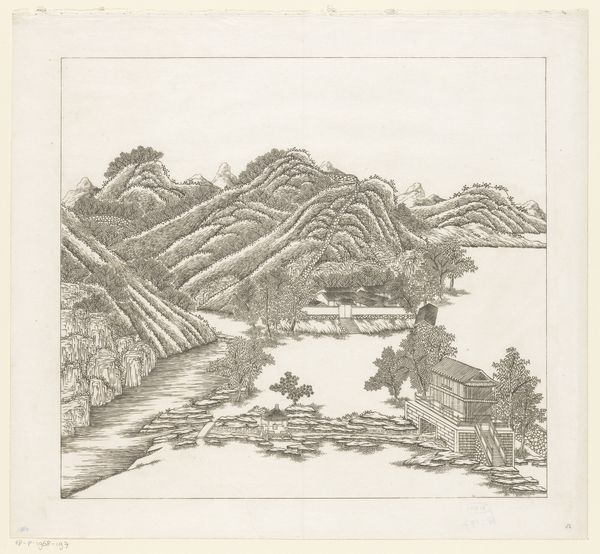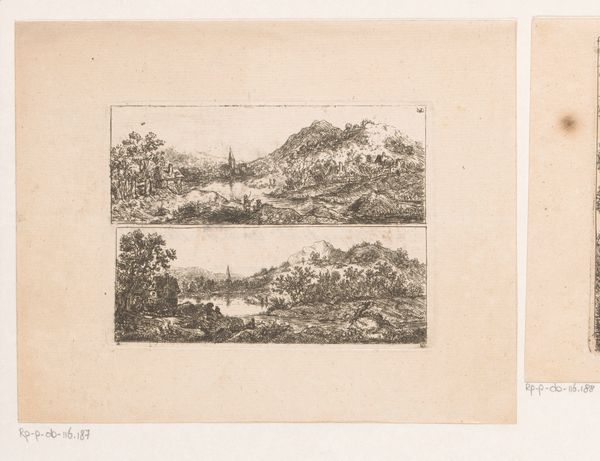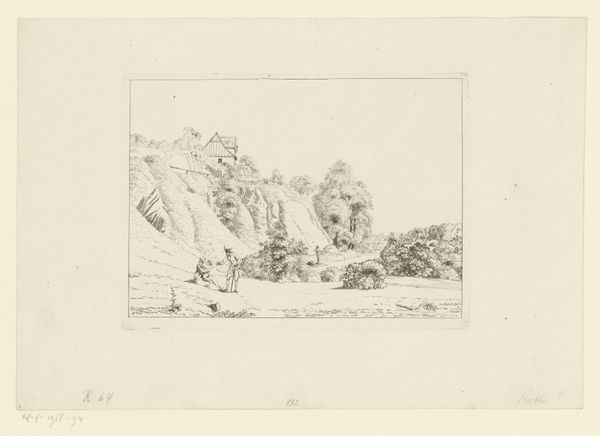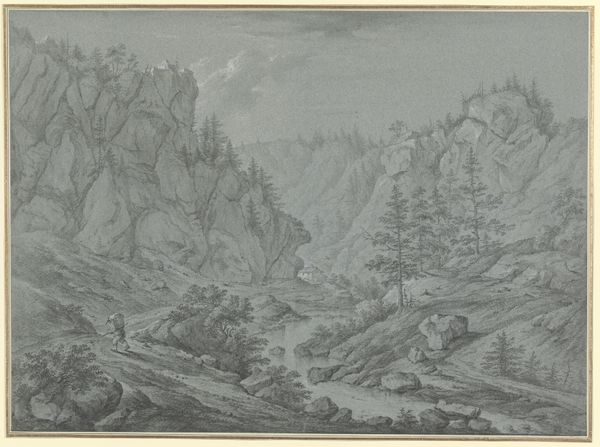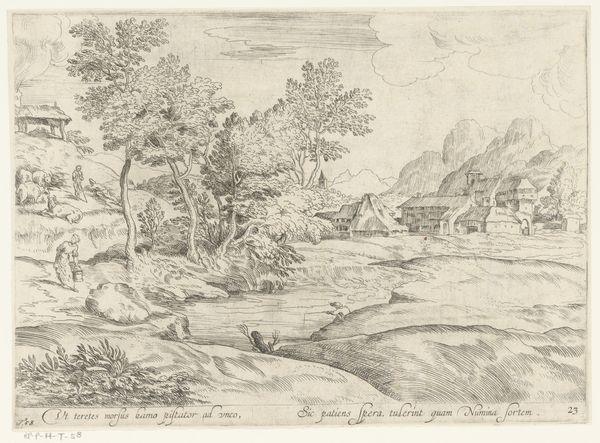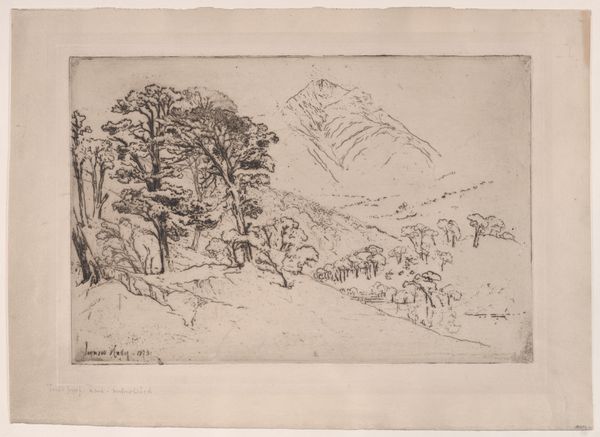
drawing, etching
#
drawing
#
etching
#
landscape
#
river
#
etching
#
mountain
Dimensions: height 215 mm, width 270 mm
Copyright: Rijks Museum: Open Domain
Curator: Let’s turn our attention to Cornelis Brouwer's “Mountain Landscape with Herders on a Riverbank,” likely created between 1795 and 1821, rendered in etching and drawing. What is your first impression? Editor: There is such stillness in the way Brouwer captures the scene. The hazy, muted quality has this quality of nostalgia. And yet, I can't help but wonder what social and labor dynamics are playing out just out of view? Curator: Absolutely. This work emerges within the broader tradition of Dutch landscape painting, but also points toward evolving notions of nature and the sublime, even, within early 19th-century European art. Editor: I see it as an interesting tension between the foreground and the background. It evokes the way landscape representation itself participates in forming cultural imaginaries about nature, class and the working body. Curator: That's an astute point. Landscapes at the time, as now, were never simply neutral representations; they were loaded with ideological weight. The artist's patron and the institutional forces around the art matter immensely here, right? Editor: Of course! The inclusion of shepherds and their livestock transforms what could be just another picturesque scene into a comment on pastoral life, perhaps even glorifying an idealized past that conveniently forgets all the brutal conditions for those in lower-classes. Curator: It highlights the fact that even these seemingly serene landscapes are social constructs that implicitly promote certain views and social formations by naturalizing them. Editor: Right. By critically examining pieces like Brouwer's, we're not just admiring artistic skill, we're acknowledging and challenging the embedded ideologies that shape our perceptions and continue to echo across historical divides. Curator: Ultimately, this etching becomes more than just a landscape; it’s a document of evolving social consciousness, raising questions about the relationship between art, history, and representation. Editor: Exactly. Reflecting on this pastoral scene pushes me to interrogate who's benefiting and who’s working within its picturesque frame.
Comments
No comments
Be the first to comment and join the conversation on the ultimate creative platform.
